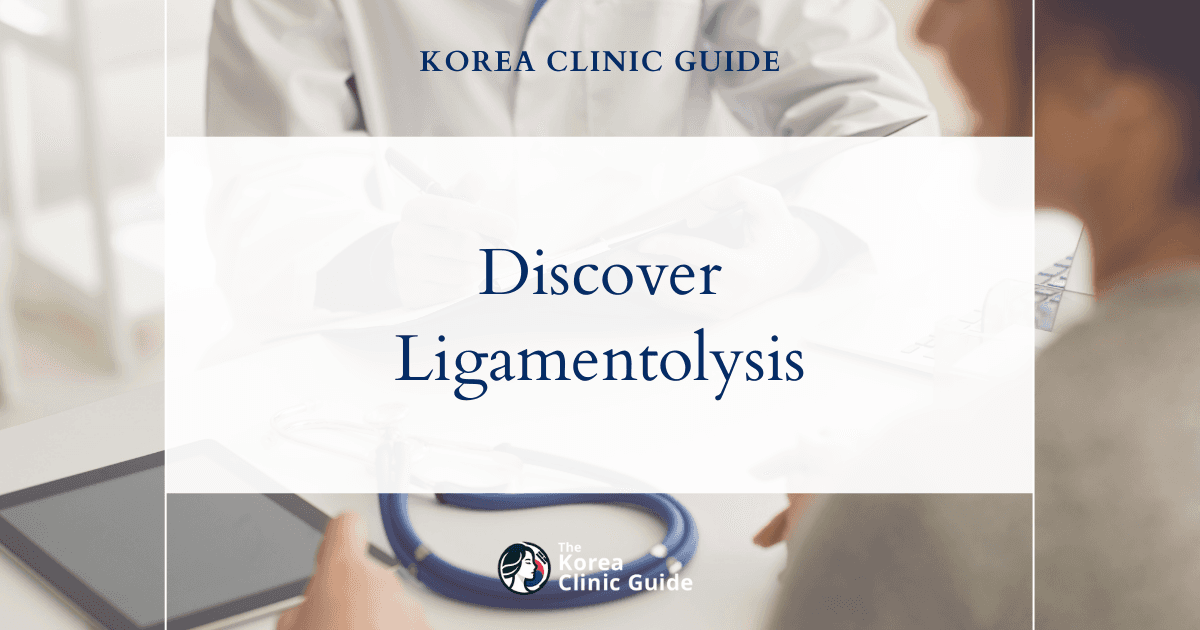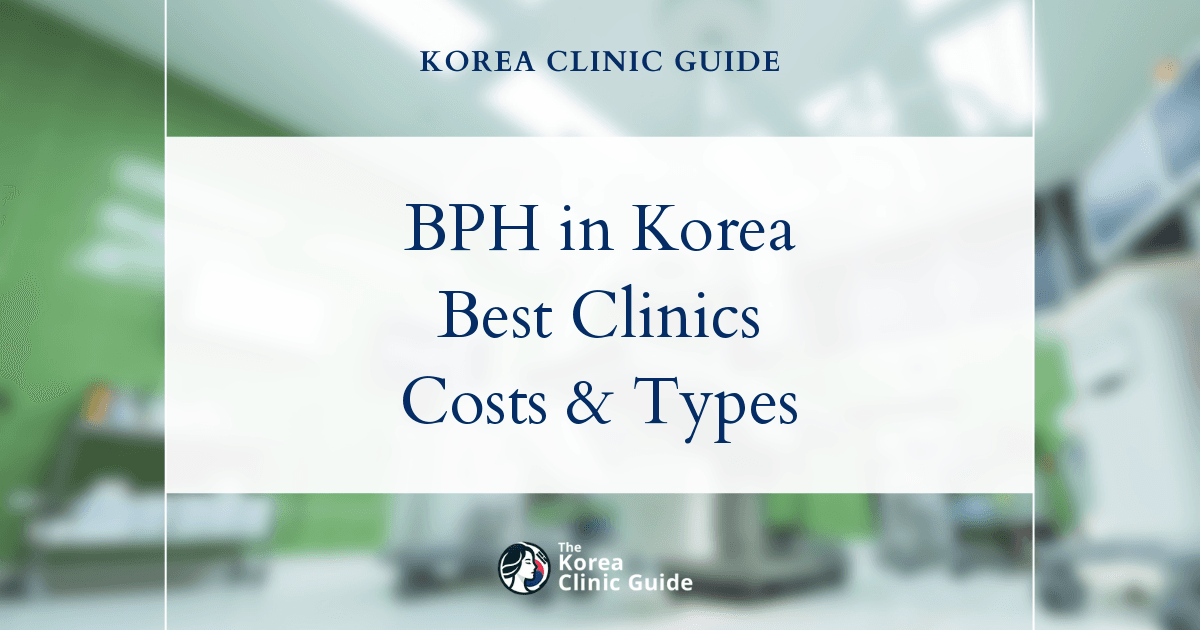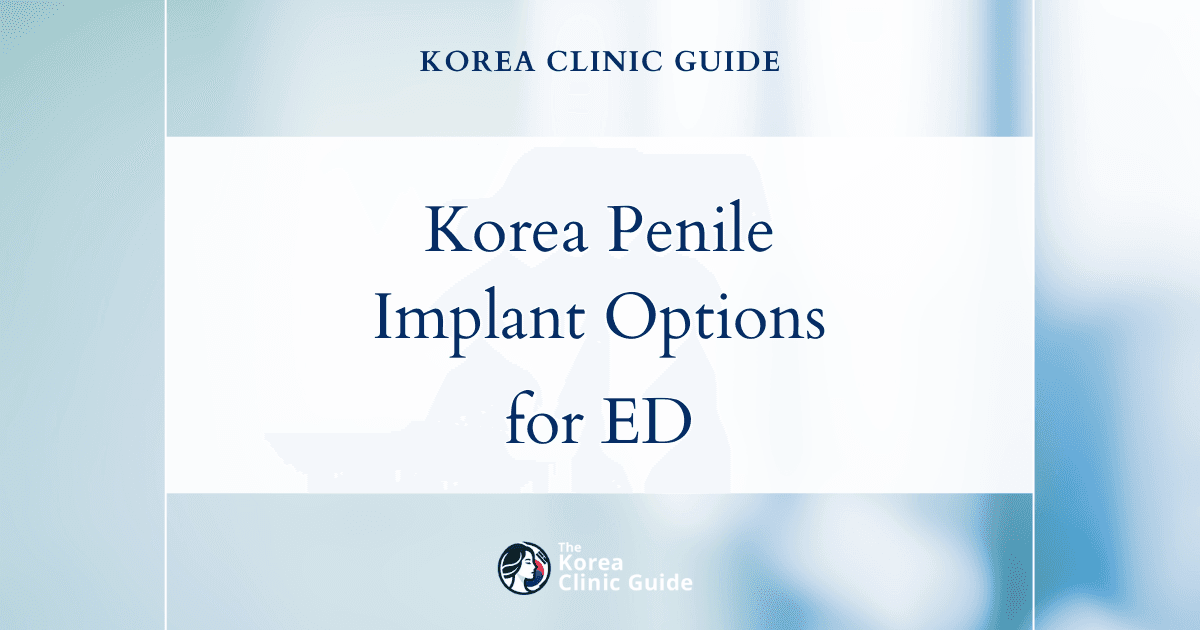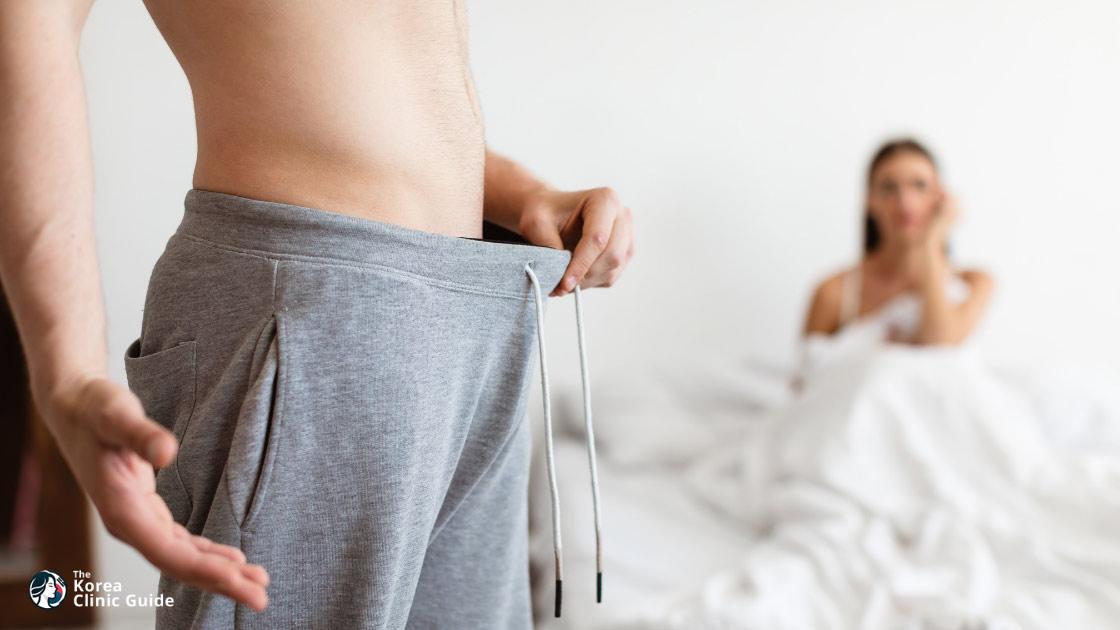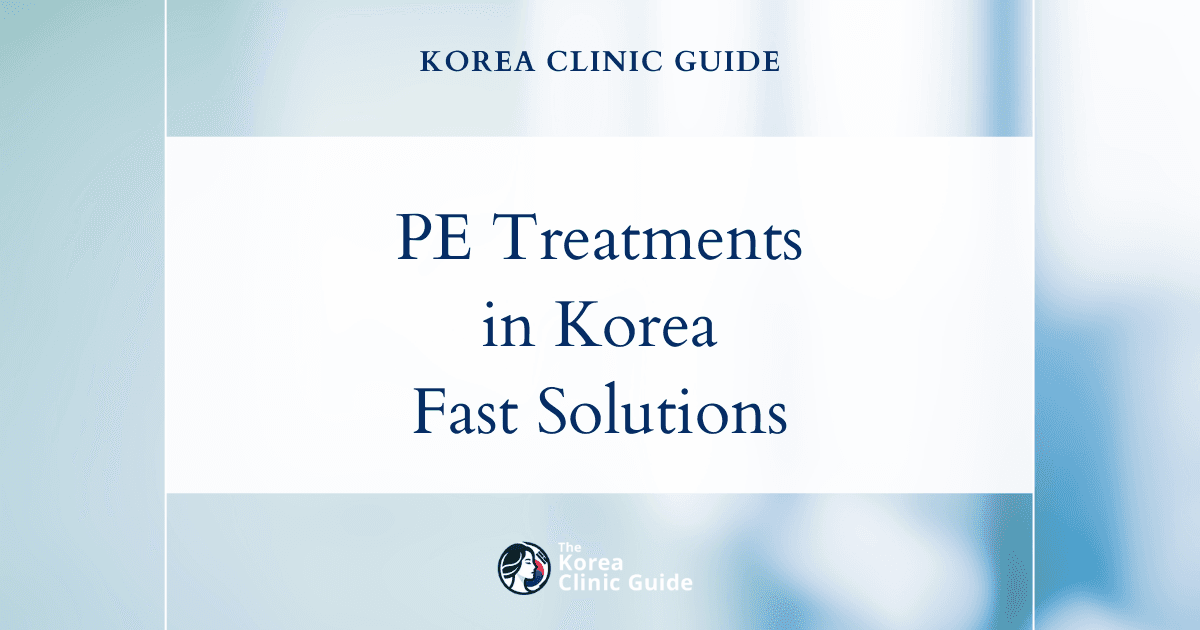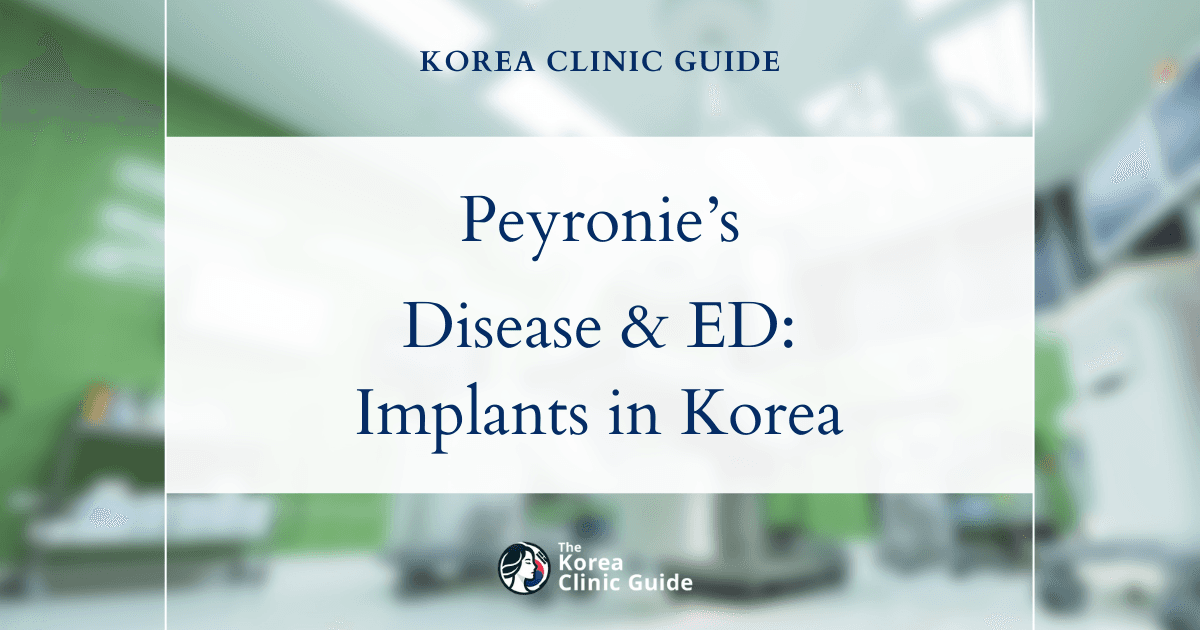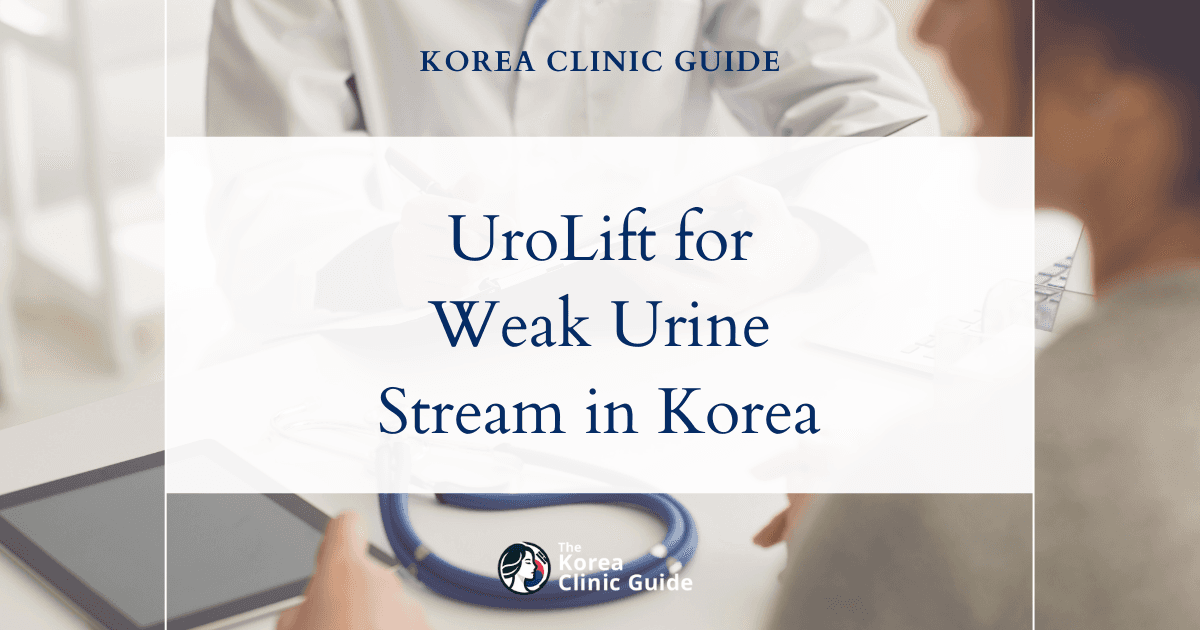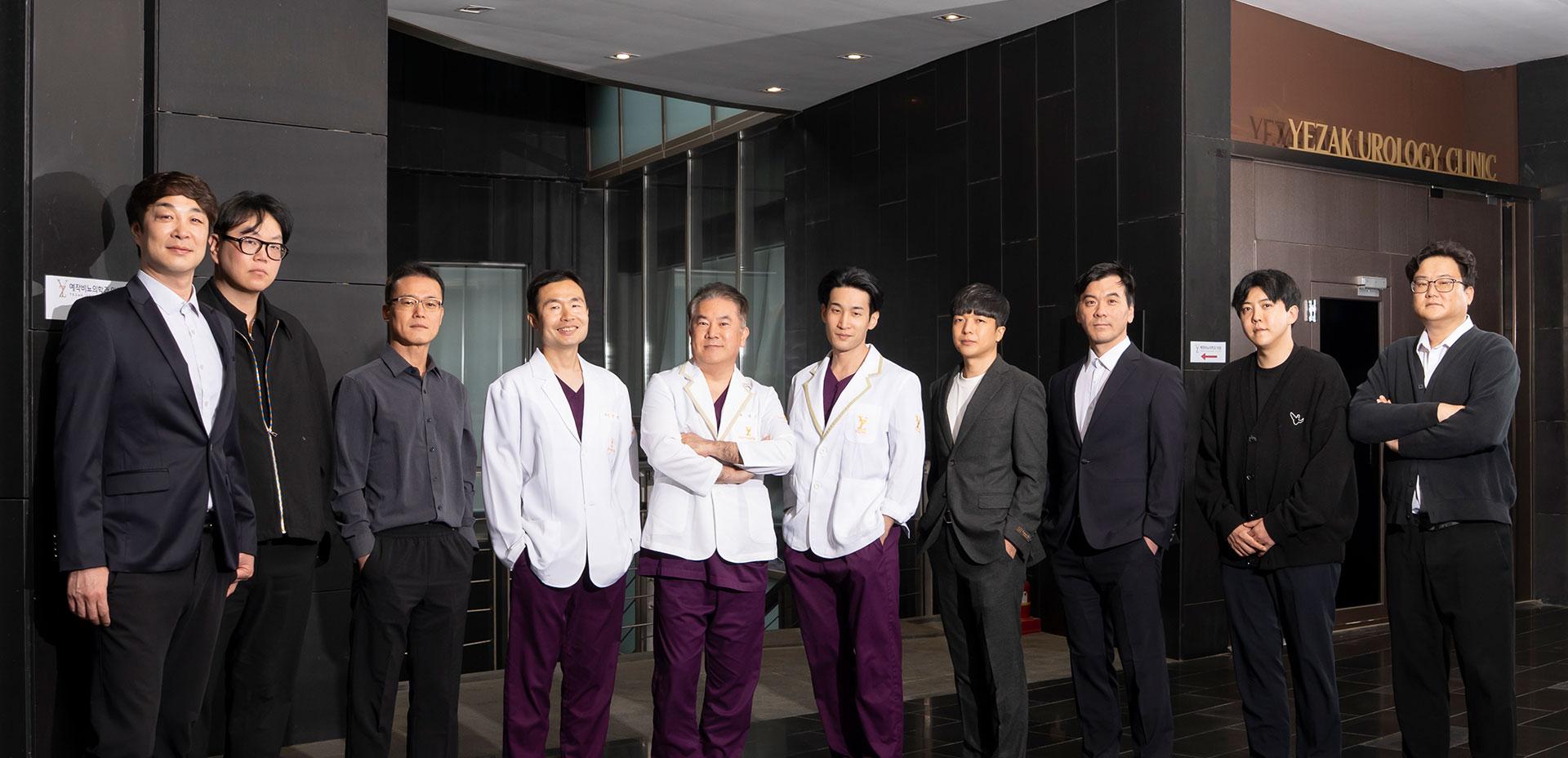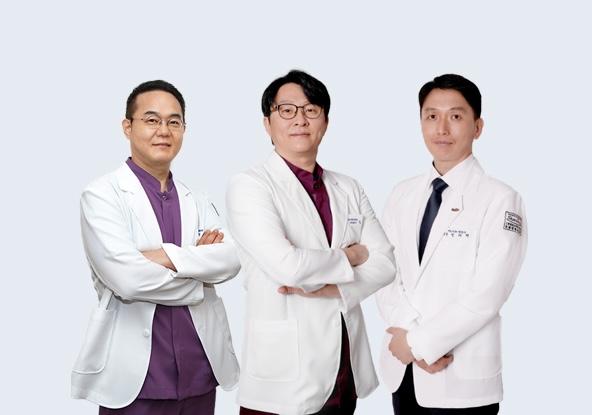Medical Tourism Blog
Circumcision in Korea | Best Clinics, Costs, Procedure Types & More
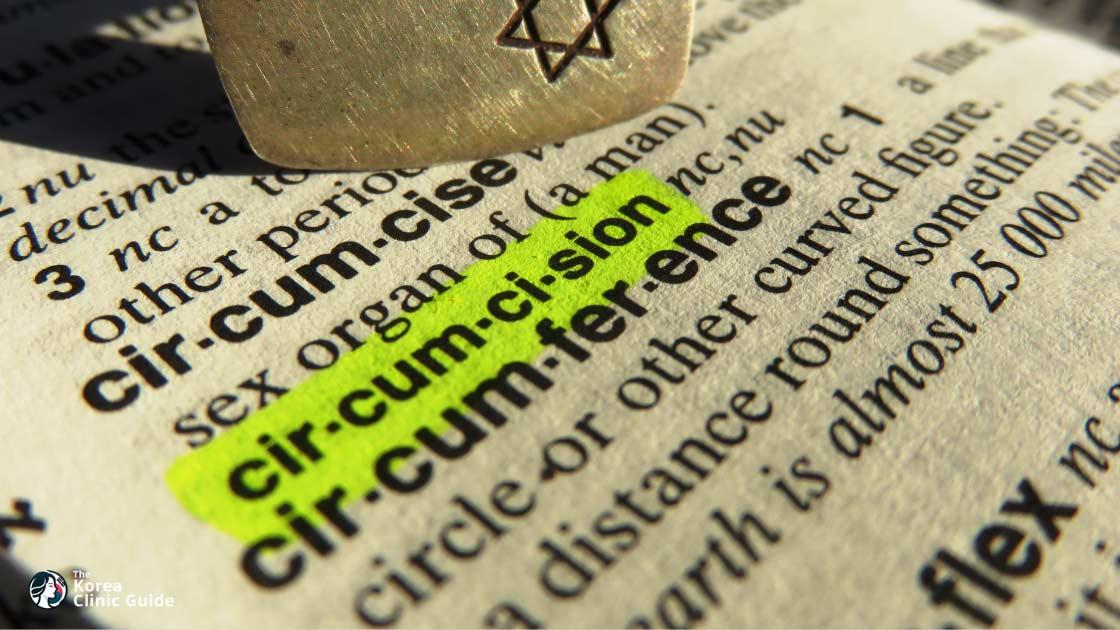
Table of contents
- What Is Circumcision?
- Best Clinics in Korea for Circumcision
- Process of Getting Circumcision in Korea
- Alternatives to Circumcision
- Conclusion
Considering treatment in Korea? Everything you need to know e.g. — how to avoid scams, visas, interpreters, recovery tips — in our Medical Tourism Master Guide. Plan with confidence in minutes, not weeks!
Did you know that South Korea has one of the highest circumcision rates in Asia, blending cultural traditions with modern medical practices? This article explores the nuanced landscape of circumcision in Korea, offering insights into its historical roots, contemporary significance, leading clinics, and alternatives, providing a comprehensive guide for individuals and families navigating this profound decision.
What Is Circumcision?
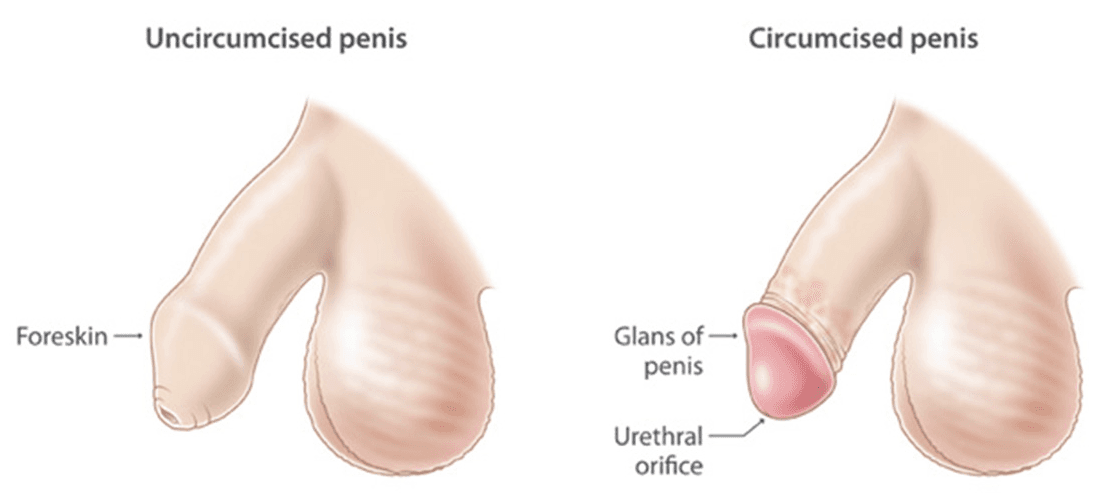
Circumcision is a surgical procedure that involves the removal of the foreskin, which is the tissue covering the head (glans) of the penis. This operation can be performed on newborns, children, and adults, depending on cultural, religious, or medical reasons. Below, we explore the details of the procedure, who can benefit from it, the types of circumcision, as well as the pros and cons.
Who Can Benefit from Circumcision?
-
Newborns: In many cultures, circumcision is performed shortly after birth for religious or cultural reasons. Parents may choose this procedure to align with family practices or societal norms.
-
Children and Adolescents: Circumcision can be recommended for older children and teens for medical reasons, such as recurrent infections or conditions like phimosis (where the foreskin cannot be fully retracted).
-
Adults: Adult circumcision is usually performed for medical reasons, including the treatment of phimosis, paraphimosis (where the retracted foreskin cannot return to its normal position), chronic urinary tract infections, or other penile health issues.
Types of Circumcision Procedures
-
Traditional Surgical Circumcision: The most common method, where surgical instruments are used to remove the foreskin. This procedure is typically performed under local or general anesthesia.
-
Plastibell Device: Commonly used for infants, this technique involves placing a plastic ring over the glans, tying a suture around the foreskin, and allowing the excess tissue to fall off naturally over a few days.
-
Gomco Clamp: Another method utilized mainly for infants, which involves clamping the foreskin and then excising it. This technique is usually done under local anesthesia and is relatively quick.
-
Laser Circumcision: A newer technique that employs laser technology to remove the foreskin. This method aims to reduce bleeding and improve precision, though it is less commonly used.
Pros of Circumcision
-
Hygiene and Health Benefits:
- Improved genital hygiene is often cited as a significant benefit, as the absence of the foreskin can make it easier to clean the penis.
- Reduced risk of urinary tract infections (UTIs), particularly in infants.
- Lower incidence of certain sexually transmitted infections (STIs), including HIV.
-
Reduced Risk of Penile Issues:
- Decreases the likelihood of developing phimosis and paraphimosis.
- Reduced risk of penile cancer and potentially lower rates of cervical cancer in female partners.
-
Cultural and Religious Significance:
- For some families and communities, circumcision is an important cultural or religious ritual, fulfilling traditional or spiritual needs.
Cons of Circumcision
-
Risks of Surgery:
- As with any surgical procedure, there are risks involved, including bleeding, infection, and adverse reactions to anesthesia.
- Possible complications may include improper healing, excessive removal of tissue, or damage to the glans.
-
Pain and Discomfort:
- Newborns and young children, despite local anesthesia, may experience pain during and after the procedure.
- Adult men undergoing circumcision might face a longer recovery period and more significant discomfort.
-
Ethical and Psychological Concerns:
- The debate around infant circumcision often touches on ethical concerns regarding consent, as infants cannot make the decision for themselves.
- Some men circumcised later in life may have feelings of regret or dissatisfaction with the outcomes.
-
Altered Sensitivity:
- There is ongoing debate about whether circumcision affects sexual pleasure. Some studies suggest a decrease in penile sensitivity due to the removal of the foreskin's nerve endings.
Circumcision remains a topic of both medical and cultural significance. Understanding the procedure's details, benefits, and potential drawbacks can help individuals and families make informed decisions in collaboration with healthcare professionals.
Best Clinics in Korea for Circumcision
Listed below are the best clinics in Korea for circumcision:
| Clinic Name | Key Features | Special Techniques |
|---|---|---|
| Yezak Urology | Yezak Urology in Apgujeong is a men’s health center offering specialized surgical and non-surgical care delivered by a multi-specialist team with advanced safety systems. Backed by comprehensive men’s health services—including male enhancement, prostate care, erectile dysfunction treatments, vasectomy, STD diagnosis and treatment, and general health checkups—Yezak Urology provides coordinated care around circumcision, ensuring patients receive thorough evaluation, procedure planning, and follow-up within a dedicated urologic setting. | For patients considering circumcision, the clinic performs surgical removal of the foreskin for medical, hygienic, or personal reasons under local or regional anesthesia, using modern methods that emphasize precise hemostasis, clean wound edges, and efficient recovery. |
| Stantop Urology & Andrology | StanTop Urology & Andrology Clinic is a specialized medical institution dedicated to improving the quality of life for men and women both domestically and globally through advanced urological and andrological treatments. Recognized by KBS and trusted by patients with over 100,000 consultations and 40,000 surgeries performed, the clinic combines expertise with comfort and privacy, offering separate consultation and treatment rooms for men and women. Its comprehensive services span the full spectrum of men’s health—from circumcision and STD testing to penile enlargement, lengthening, and cutting-edge therapies for erectile dysfunction—alongside a VIP service that delivers personalized, discreet care. | Dedicated circumcision expertise within a focused Male Clinic that includes circumcision as a core service; Proven surgical experience, with 40,000 surgeries performed and over 100,000 patient consultations informing safe, efficient care pathways; Privacy-first environment, featuring separate men’s and women’s consultation and treatment rooms to ensure comfort and discretion; Comprehensive men’s health infrastructure, including on-site STD check-ups that support safe preoperative planning and postoperative care; Advanced urological and andrological capabilities demonstrated by a wide range of penile and erectile dysfunction treatments (implants, shockwave therapy, stem cell therapy, and more); KBS-recognized clinic with a strong track record that inspires patient confidence in Korea and abroad; VIP service options for personalized treatment plans, streamlined scheduling, and enhanced privacy throughout the circumcision journey. |
| Blue Urology | Blue Urology in Yeongdeungpo provides comprehensive, patient-centered care across urinary and men’s health, uniting advanced diagnostics with a full spectrum of treatments. From cystoscopy, uroflowmetry, urodynamic testing, prostate ultrasound, and targeted prostate biopsy to prostate and bladder therapies such as TURP, laser prostate surgery, Botox for overactive bladder, and pelvic floor therapy, the clinic delivers precise, evidence-based care. Men’s health and fertility services—including vasectomy, varicocele repair, erectile dysfunction evaluation and treatment, and premature ejaculation management—are complemented by specialized scrotal and penile surgery expertise. Within this surgical program, circumcision is performed using modern techniques that emphasize precision, comfort, and cosmetic outcomes, ensuring patients receive safe, streamlined care in one trusted setting. Why Blue Urology is the best choice for circumcision: Modern circumcision techniques that prioritize precision, comfort, and a refined cosmetic outcome; Dedicated expertise in scrotal and penile surgery, including hydrocele repair, spermatocele removal, and penile curvature correction for comprehensive surgical care; Clear, patient-centered counseling around indications such as recurrent infections, scarring, or personal preference; Access to a full diagnostic suite—cystoscopy, uroflowmetry, urodynamic testing, and prostate imaging—when evaluation of urinary symptoms is needed before or after surgery; Integrated men’s health support, from erectile dysfunction and premature ejaculation care to fertility services like varicocele repair and vasectomy; Strong track record in minimally invasive, recovery-focused urology (e.g., TURP, laser prostate surgery, bladder Botox) that reflects a culture of safety and precision; One-stop continuity of care, including stone management, ureteroscopy, ESWL, and prevention planning, minimizing referrals and delays; Convenient Yeongdeungpo location and a consistent commitment to comprehensive, patient-centered care for men’s health concerns |
Yezak Urology
Yezak Urology in Apgujeong is a men’s health center offering specialized surgical and non-surgical care delivered by a multi-specialist team with advanced safety systems. For patients considering circumcision, the clinic performs surgical removal of the foreskin for medical, hygienic, or personal reasons under local or regional anesthesia, using modern methods that emphasize precise hemostasis, clean wound edges, and efficient recovery.
Backed by comprehensive men’s health services—including male enhancement, prostate care, erectile dysfunction treatments, vasectomy, STD diagnosis and treatment, and general health checkups—Yezak Urology provides coordinated care around circumcision, ensuring patients receive thorough evaluation, procedure planning, and follow-up within a dedicated urologic setting.
You can check out their website here: Yezak Urology Website
Stantop Urology & Andrology
StanTop Urology & Andrology Clinic is a specialized medical institution dedicated to improving the quality of life for men and women both domestically and globally through advanced urological and andrological treatments. Recognized by KBS and trusted by patients with over 100,000 consultations and 40,000 surgeries performed, the clinic combines expertise with comfort and privacy, offering separate consultation and treatment rooms for men and women. Its comprehensive services span the full spectrum of men’s health—from circumcision and STD testing to penile enlargement, lengthening, and cutting-edge therapies for erectile dysfunction—alongside a VIP service that delivers personalized, discreet care.
- Dedicated circumcision expertise within a focused Male Clinic that includes circumcision as a core service
- Proven surgical experience, with 40,000 surgeries performed and over 100,000 patient consultations informing safe, efficient care pathways
- Privacy-first environment, featuring separate men’s and women’s consultation and treatment rooms to ensure comfort and discretion
- Comprehensive men’s health infrastructure, including on-site STD check-ups that support safe preoperative planning and postoperative care
- Advanced urological and andrological capabilities demonstrated by a wide range of penile and erectile dysfunction treatments (implants, shockwave therapy, stem cell therapy, and more)
- KBS-recognized clinic with a strong track record that inspires patient confidence in Korea and abroad
- VIP service options for personalized treatment plans, streamlined scheduling, and enhanced privacy throughout the circumcision journey
You can check out their website here: Stantop Urology & Andrology Website
Blue Urology
Blue Urology in Yeongdeungpo provides comprehensive, patient-centered care across urinary and men’s health, uniting advanced diagnostics with a full spectrum of treatments. From cystoscopy, uroflowmetry, urodynamic testing, prostate ultrasound, and targeted prostate biopsy to prostate and bladder therapies such as TURP, laser prostate surgery, Botox for overactive bladder, and pelvic floor therapy, the clinic delivers precise, evidence-based care. Men’s health and fertility services—including vasectomy, varicocele repair, erectile dysfunction evaluation and treatment, and premature ejaculation management—are complemented by specialized scrotal and penile surgery expertise. Within this surgical program, circumcision is performed using modern techniques that emphasize precision, comfort, and cosmetic outcomes, ensuring patients receive safe, streamlined care in one trusted setting.
Why Blue Urology is the best choice for circumcision
- Modern circumcision techniques that prioritize precision, comfort, and a refined cosmetic outcome
- Dedicated expertise in scrotal and penile surgery, including hydrocele repair, spermatocele removal, and penile curvature correction for comprehensive surgical care
- Clear, patient-centered counseling around indications such as recurrent infections, scarring, or personal preference
- Access to a full diagnostic suite—cystoscopy, uroflowmetry, urodynamic testing, and prostate imaging—when evaluation of urinary symptoms is needed before or after surgery
- Integrated men’s health support, from erectile dysfunction and premature ejaculation care to fertility services like varicocele repair and vasectomy
- Strong track record in minimally invasive, recovery-focused urology (e.g., TURP, laser prostate surgery, bladder Botox) that reflects a culture of safety and precision
- One-stop continuity of care, including stone management, ureteroscopy, ESWL, and prevention planning, minimizing referrals and delays
- Convenient Yeongdeungpo location and a consistent commitment to comprehensive, patient-centered care for men’s health concerns
Find more about this clinic here: Blue Urology Website
Process of Getting Circumcision in Korea
Introduction to the Procedure
Circumcision, the surgical removal of the foreskin from the male genitalia, is a medical procedure with cultural, religious, and health implications. While practices and prevalence vary globally, South Korea has one of the highest rates of male circumcision in Asia. Whether you are considering circumcision for cultural, religious, or medical reasons, South Korea presents an environment with advanced medical facilities and experienced healthcare professionals.
Pre-Procedure Preparations
Before traveling to South Korea for circumcision, thorough preparation is crucial. Start by researching reputable hospitals and clinics renowned for their urology departments. Many major hospitals in South Korea have English-speaking staff, but it is beneficial to check in advance. Some of the prominent hospitals in Seoul include Samsung Medical Center and Seoul National University Hospital. It is advisable to make an appointment prior to your arrival.
Travel and Accommodation
Seoul, the bustling capital city, is the primary destination for medical tourists seeking circumcision due to its advanced medical infrastructure. Incheon International Airport, located just outside Seoul, is a major gateway to the country. From the airport, you can get to the city via airport express trains, buses, or taxis.
South Korea offers a range of accommodation options from luxury hotels to budget guesthouses. Given the urban density of Seoul, most accommodations are conveniently located near medical facilities. Opt for lodging close to your chosen hospital to minimize travel stress.
The Day of the Procedure
Once at the clinic or hospital, you will undergo a comprehensive consultation, including a physical examination and discussion about the procedure, its benefits, risks, and the expected recovery process. The procedure itself is usually performed under local anesthesia for adults and teenagers, making it relatively pain-free. For younger children, general anesthesia may be administered to minimize discomfort.
Procedure Process

Circumcision is typically an outpatient procedure. The surgery can last between 30 minutes to an hour. After numbing the area, the surgeon will proceed with the removal of the foreskin. Once completed, the area is stitched up, and a protective bandage is applied.
Post-Procedure Care
Recovery instructions will be provided post-surgery. Patients are often advised to rest and avoid strenuous activities for at least a week. Pain relief medications and antibiotics may be prescribed to manage discomfort and prevent infection. Follow-up consultations are crucial to ensure proper healing. Most hospitals offer support services, including 24-hour hotlines for any post-procedure concerns.
Cost and Insurance
The cost of circumcision in South Korea can vary widely depending on the hospital and the patient's age. While Korean nationals often benefit from national health insurance, international patients usually bear the full cost, which typically ranges from $200 to $1,000. It is essential to discuss and confirm the costs upfront.
Cultural Considerations
South Korea's high circumcision rate means that the procedure is commonly accepted and practiced, easing any potential social stigma. Medical tourists can expect a professional and respectful environment throughout their stay.
Language and Communication
While many medical professionals in South Korea have a good command of English, it may still be beneficial to have a translator, especially if you are not fluent in the local language. This ensures clear communication and understanding of medical advice and aftercare instructions.
Combining Treatment with Tourism
South Korea is a fascinating country with a rich cultural heritage. Patients often combine their medical visit with tourism, exploring attractions such as Gyeongbokgung Palace, Bukchon Hanok Village, and shopping districts like Myeongdong. However, any sightseeing should be planned with the recovery process in mind.
By understanding the intricate details of traveling to South Korea for circumcision, you can ensure a smooth, successful, and comfortable medical journey.
Alternatives to Circumcision
1. Topical Steroid Creams
Topical steroid creams are a non-invasive treatment option for managing foreskin conditions such as phimosis, where the foreskin cannot be retracted over the glans of the penis. These creams help to reduce inflammation and can loosen the skin, making it more retractable over time. The application is typically simple and can be done at home under the guidance of a healthcare provider. Using topical steroids is less risky compared to surgery and does not involve the removal of tissue, which can be a significant consideration for both parents and individuals seeking alternatives.
2. Preputioplasty
Preputioplasty is a surgical alternative to circumcision that aims to preserve the foreskin while addressing issues like phimosis. The procedure involves making small incisions in the foreskin to widen it, allowing for easier retraction. This technique offers the benefits of resolving phimosis while retaining the natural appearance and function of the foreskin. Preputioplasty generally involves a shorter recovery time and fewer complications compared to full circumcision. It is particularly favored by those who wish to avoid the complete removal of the foreskin for cultural, religious, or personal reasons.
3. Hygiene and Care Techniques
Proper hygiene and care techniques are essential for maintaining foreskin health and preventing infections or other foreskin-related issues. Educating parents and individuals on how to clean the area effectively can mitigate the need for circumcision. This involves gently retracting the foreskin (without forcing) to clean the area beneath it and ensuring it is dried properly. Regular hygiene practices can prevent conditions that often lead to circumcision, such as balanitis and recurrent infections. This non-invasive approach empowers individuals to take control of their health through simple daily routines, avoiding the risks associated with surgical procedures.
| Procedure Price | Korean Won (₩) | USD ($) |
|---|---|---|
| Low Price | ₩700,000 | $500 |
| High Price | ₩900,000 | $700 |
Exchange rate as of 2025-05-22: 1 KRW = 0.0007 USD
Please note that these prices are approximate guidelines and can vary significantly based on the clinic and your individual circumstances.
Conclusion
In conclusion, circumcision in Korea remains a complex and multifaceted issue that interweaves cultural, medical, and social dimensions. While the practice gained significant traction during the post-Korean War period influenced by Western medical practices, its prevalence appears to be gradually declining as societal attitudes shift and the medical community reevaluates the necessity and benefits of the procedure. As Korea continues to modernize and globalize, it becomes increasingly important for policymakers, medical professionals, and families to engage in informed discussions about circumcision, balancing cultural heritage with contemporary medical evidence to make decisions that prioritize the health and well-being of individuals.
